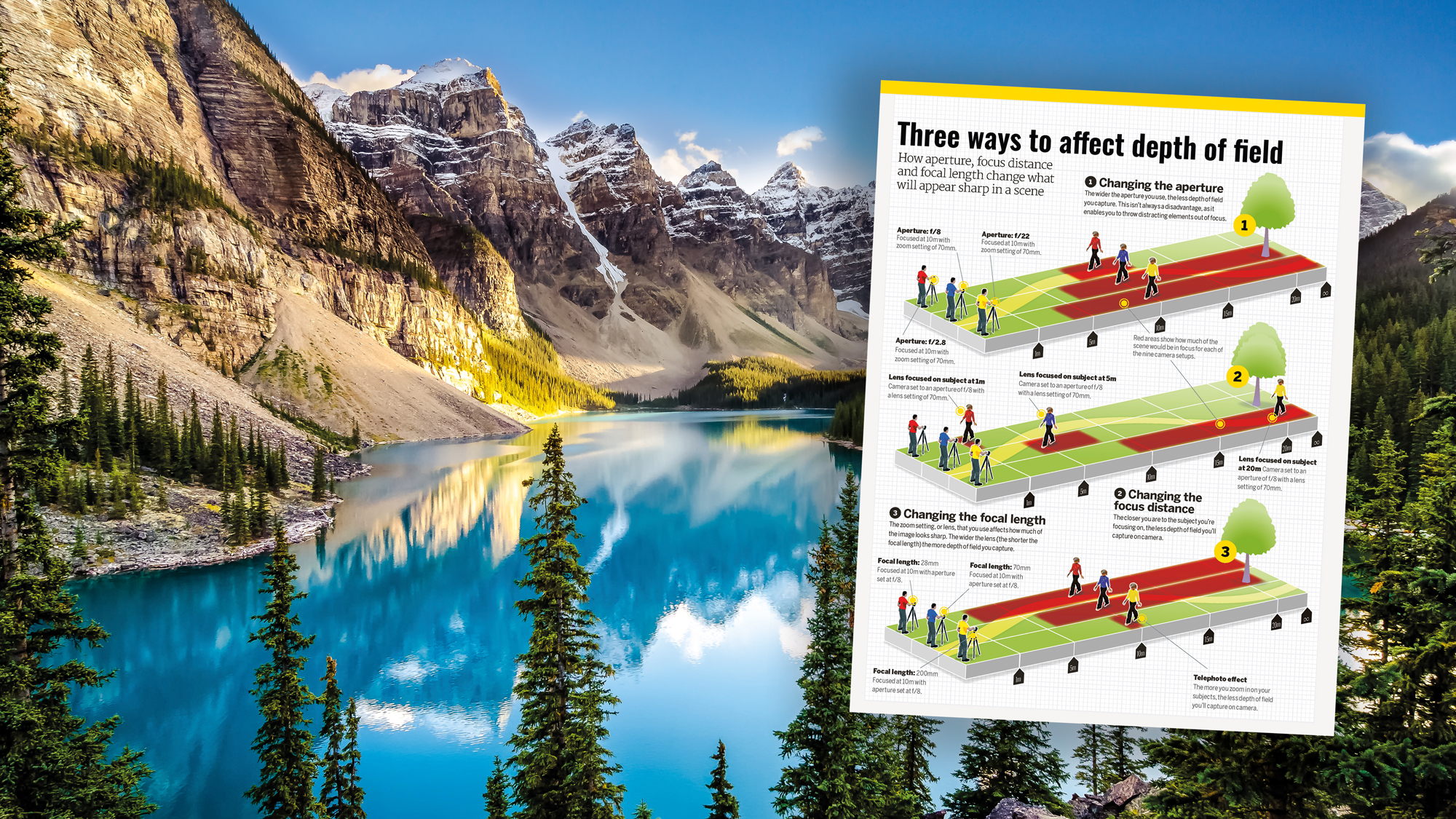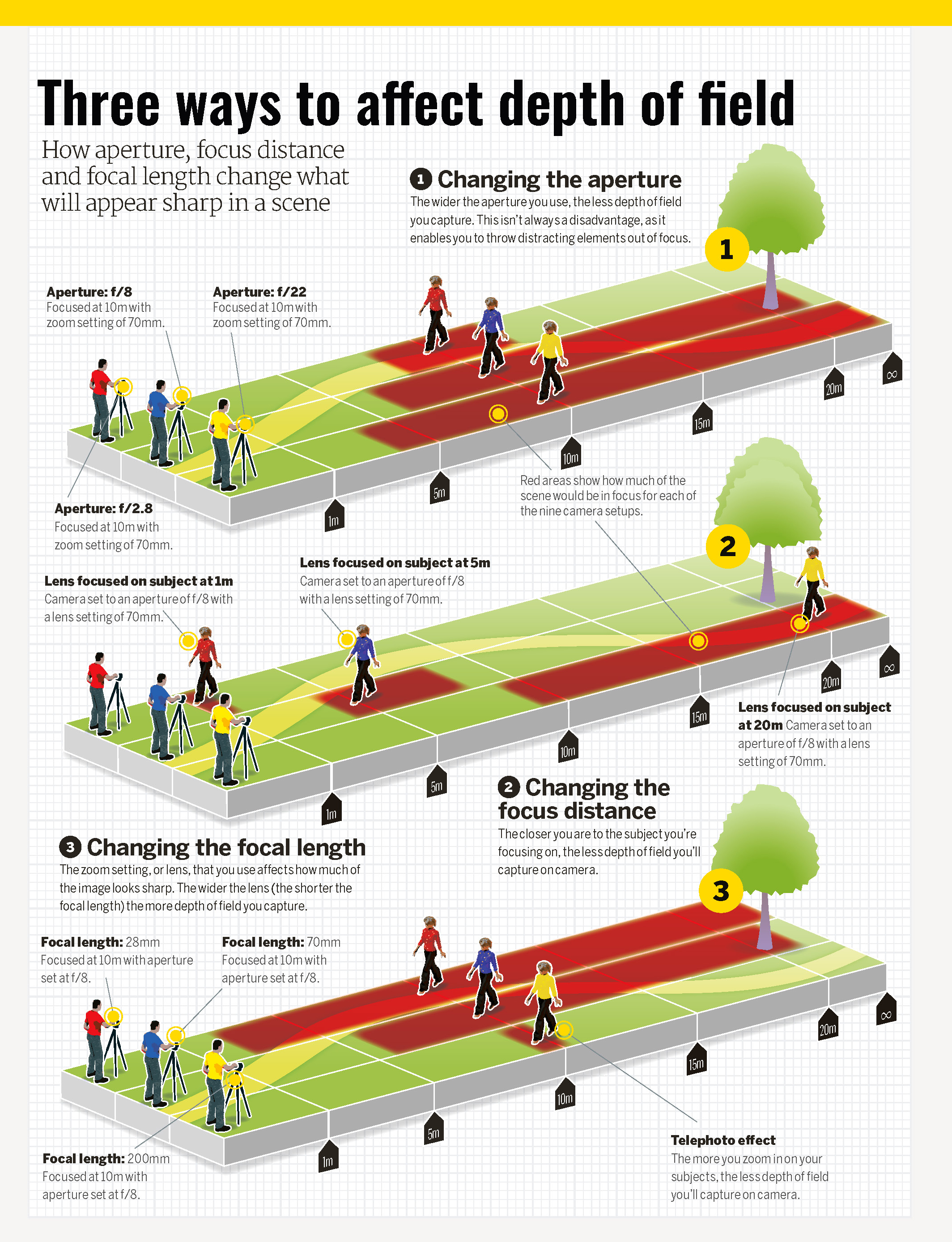Photography cheat sheet: how to affect depth of field
Discover how to get the right amount of focus in your shots every time and how changing the aperture changes the look

To explain what depth of field is, it can be helpful to start by looking at lenses. Lenses can only focus precisely at one distance at a time. But things that are closer or more distant than the subject can still look sharp. This ‘zone of apparent sharpness’ can be so shallow that it’s virtually non-existent, or can stretch to a distant horizon.
‘Zone of apparent sharpness’ is a good working definition of depth of field (DoF). Only perfect focusing at one distance can create pin-point sharpness, but things on either side may still appear sharp – any blur is too slight to be perceptible. It’s apparent sharpness that counts in the real world. If something looks sharp, even if theoretically it isn’t, it’s sharp enough for our purposes.
Most landscape photographers will normally try to get everything sharp, but it’s a matter of choice, not a law. In sports or portraiture, a shallow depth of field can be welcome, as it throws distracting backgrounds and foregrounds out of focus.
Three ways to affect depth of field
Controlling depth of field
Depth of field varies enormously, and it’s governed by three factors. The first is aperture, the size of the opening created by the lens’s iris. Most of know that wider apertures give shallower depths of field, but remember that aperture numbers are fractions, so f/16 is a narrow option and f/4 is wide.
How you set the aperture on your camera depends on the brand and the model, of course. To set the aperture on the best Nikon camera, for example, you'd use Aperture Priority (A on the mode dial) and tweak settings with the command dial (on cameras with two dials, use the sub-command dial at the front of the camera). As the aperture changes, the camera adjusts the shutter speed to keep the overall exposure constant.
The next factor to impact depth of field is the lens’s focal length. A longer focal length reduces DoF while a shorter on increases it. A wide-angle setting (such as the 18mm end of a kit lens) is good for keeping everything sharp, whereas to blur the background, you need to use a longer focal length, such as 55mm.
The third factor is the distance between the camera and subject. The smaller this is, the less DoF you’ll have. This is clear with macro work, when DoF all but disappears. But DoF extends beyond the point of focus, as well as in front – so focusing on the most distant point won’t give you maximum DoF.
The best camera deals, reviews, product advice, and unmissable photography news, direct to your inbox!
However, the three factors controlling DoF don’t always work in harmony. You might decide to swap to a wide-angle lens to improve DoF. This makes your subject look smaller in frame. To fix this, you’d move closer, but this reduces DoF.
A sneak preview
Looking through the viewfinder of a DSLR doesn’t show the effect of changing aperture – it shows the view with the lens wide open, but predicting the end result isn’t pure guesswork. Many Nikon DSLRs have a DoF Preview button, which stops down the lens to the selected aperture. Unfortunately, this darkens the image, making it harder to see.
With the electronic viewfinders of Z-series Nikons, not only is the lens always stopped down to the selected aperture, enabling you to judge DoF, but the brightness reflects the exposure settings, so you can see the image clearly. This is also true of using Live View on a DSLR. Indeed, some DSLRs, such as the D3500, don’t have a DoF Preview button, so you’ll have to use Live View if you want to get an idea of how much of your scene is in focus before you take the shot.
Read more
Photography cheat sheets
The best professional cameras
What are the best camera lenses to buy?
N-Photo: The Nikon Magazine is a monthly publication that's entirely dedicated to Nikon users. As a 100% independent magazine, you can be assured of unbiased opinion from a trustworthy team of devoted photography experts including editor Adam Waring and Deputy Editor Mike Harris.
Aimed at all users, from camera newcomers to working pros, every issue is packed with practical, Nikon-specific advice for taking better photos, in-depth reviews of Nikon-compatible gear, and inspiring projects and exciting video lessons for mastering camera, lens and Photoshop techniques.
Written by Nikon users for Nikon users, N-Photo is your one-stop shop for everything to do with cameras, lenses, tripods, bags, tips, tricks and techniques to get the most out of your photography.
- Lauren ScottFreelance contributor/former Managing Editor


